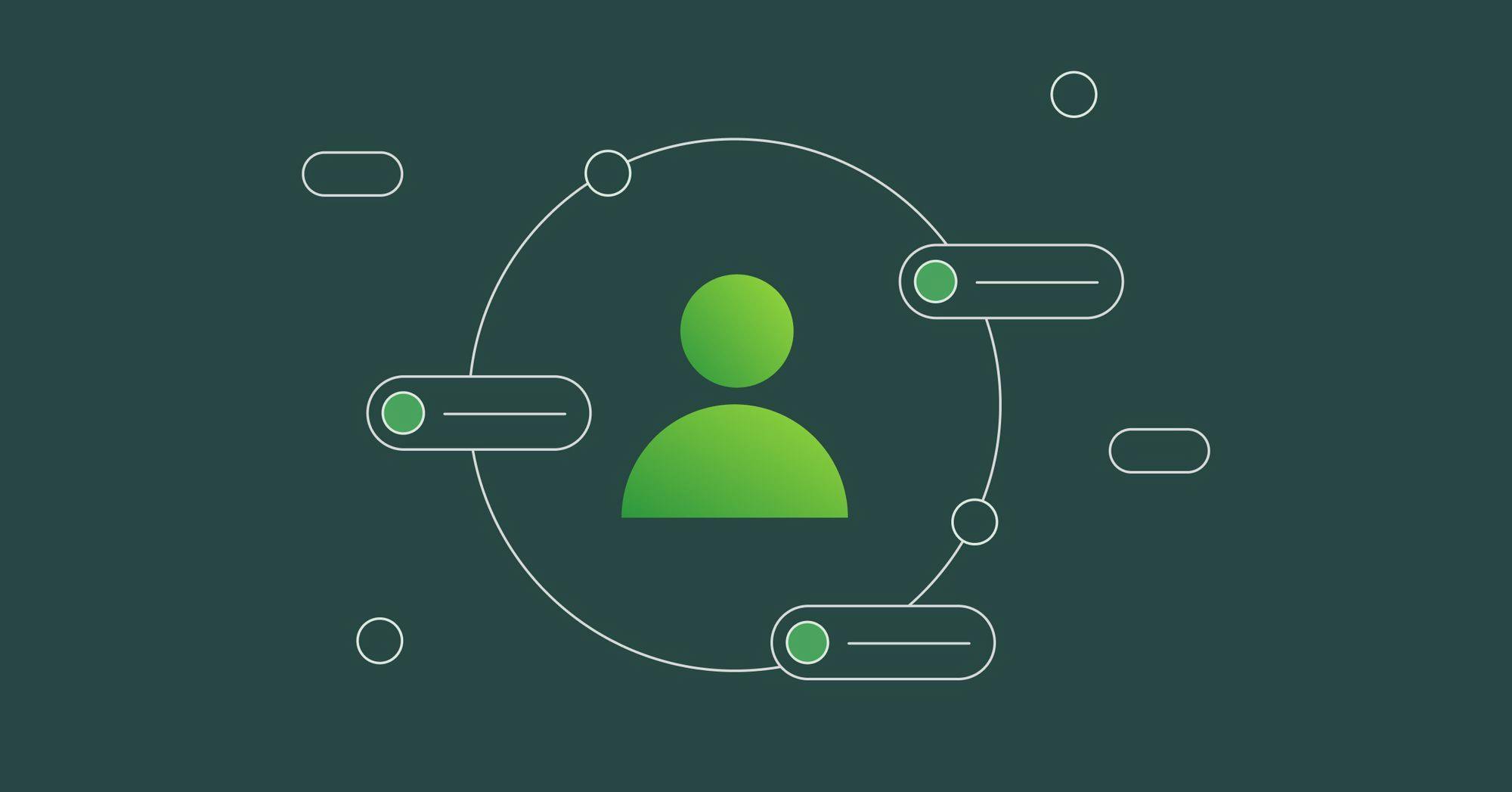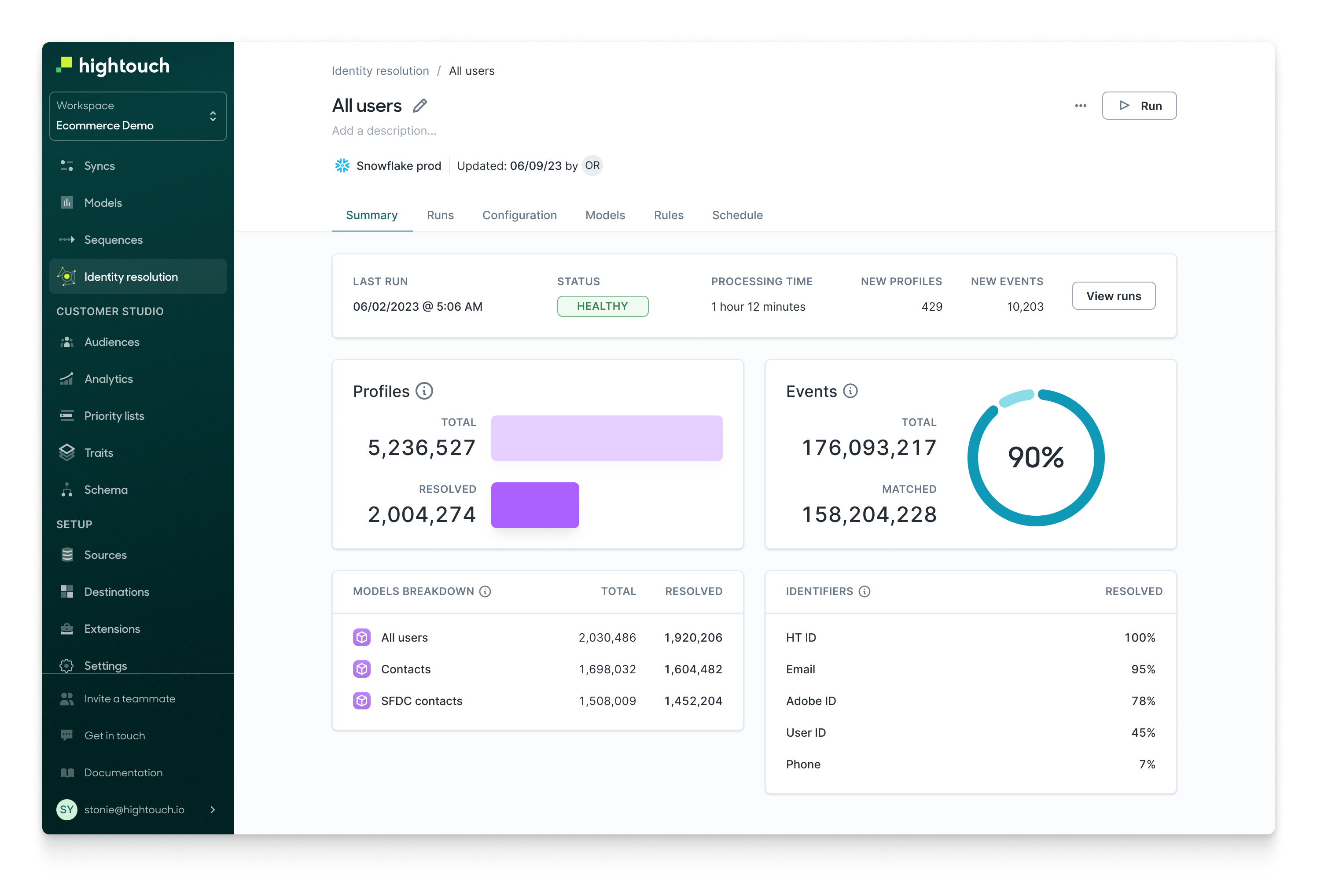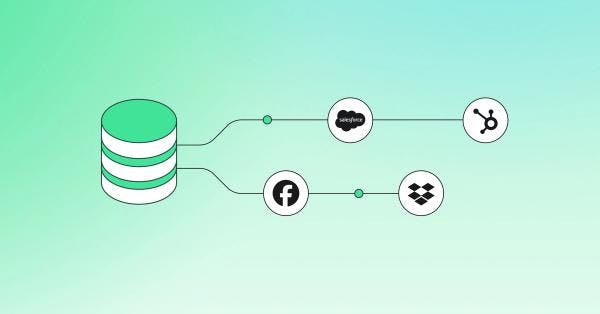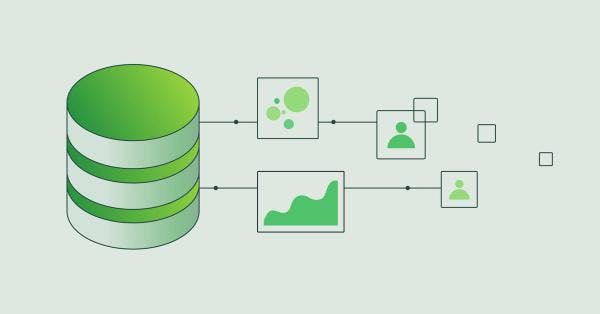The Best Identity Resolution Tools
What are the best options available on the market for identity resolution and where do they differentiate?

Craig Dennis
August 9, 2023
7 minutes

Identity resolution is complex, and finding how to link disjointed data to create a single customer profile can be challenging. This complexity is compounded when you add in all of the different tools available on the market.
To help you decide which identity resolution tool is the best for the outcomes you want to drive, this article will cover:
- Types of identity resolution tools
- Key features they should include
- The best tools available on the market
- How to select the right tool
Types of Identity Resolution Tools
Identity resolution software is specifically developed to help you accurately identify and resolve customer data across multiple touchpoints and systems into a unified profile.
Identity resolution tools utilize sophisticated algorithms and data-matching techniques to link various data points, such as customer interactions, behaviors, and attributes, to a single user profile. By leveraging this central source of truth, businesses can gain valuable insights into customer behavior, preferences, and engagement across different channels.
There are two ways to solve identity resolution:
- Warehouse-native, as the name implies, takes place within your existing data warehouse. These tools give you more flexibility because they enable you to build identity resolution algorithms using any and all of your data. You have direct control over how your data is structured, and since the identity graph lives directly in your warehouse, you can use it for any of your use cases and maintain complete control over it. Best of all since these tools simply run on top of your warehouse, they don’t store any data.
- Black-box solutions operate as separate entities on the outside of your data stack. These solutions aren’t as data-rich because they only have access to behavioral clickstream data. The identity resolution algorithms are designed with a one-size fits all model that is very inflexible and rigid. This makes it difficult to address and conform to your use cases dynamically. Additionally, with a black-box solution, you don’t actually own the identity graph because it lives outside of your existing data infrastructure.
Key Features of Identity Resolution
While the underlying process of identity resolution might be complicated, every tool should offer four components.
- Entity Resolution: Entity resolution, sometimes referred to as entity matching, involves the task of combining data that pertains to the same real-world object, like a person, business, or household. This process enables a clearer understanding of how these entities are interconnected and allows for the reconciliation of data inconsistencies and the unification of the data. While focusing on identity resolution, entity resolution extends to other categories like businesses or households.
- Record Matching: Different databases can be cross-referenced to match records associated with the same individual across multiple departments and products. This powerful capability enables companies to consolidate comprehensive customer profiles in a centralized hub, creating a holistic understanding of their customers’ interactions and behaviors.
- Duplicate Detection: You can merge such records into a single entry by identifying identical or closely resembling entries. This proactive approach helps to prevent any confusion arising from duplicate records and ensures all customer information remains current, precise, and consistent throughout the organization’s database.
- Identity Graphs: An identity graph is the output of identity resolution. It’s a table that consolidates all of your customer identifiers into a single actionable profile you can use across your business.
Best Identity Resolution Tools
To help you choose the right identity resolution solution, here is a breakdown of the industry-leading tools.
Hightouch
Hightouch is the only warehouse-native Identity Resolution solution on the list. It allows you full control over your identity resolution rules, so what’s exactly happening is clear, unlike other solutions that leave you guessing. And you get the full benefit of all your customer data as Hightouch integrates with your data warehouse.
Defining these important identity resolution rules is achievable without technical knowledge. It has a user-friendly no-code UI, so you can start resolving identities immediately.
Rather than locking away the work carried out by identity resolution and throwing away the key, Hightouch writes an identity graph into your data warehouse so you have it available to use with activation, analytics, or other operational use cases.

Liveramp
LiveRamp provides data connectivity and identity resolution solutions. It specializes in helping you connect and utilize your customer data more effectively. LiveRamp offers a platform that enables secure and privacy-conscious data transfer between your various marketing and advertising systems.
The LiveRamp Identity Graph is a crucial data asset and technology that connects de-identified offline touchpoints with online devices in a people-based manner. LiveRamp employs deterministic linking processes and high-quality data to ensure accurate matches between offline personally identifiable information (PII) and online devices. It resolves separate email addresses, postal addresses, and phone numbers to a single individual, creating a cohesive view of your offline PII. One of the major downfalls of Liveramp is it requires you to upload data into it, making it a non-warehouse native solution that introduces data security concerns.
Segment
Segment is a Customer Data Platform (CDP) that collects event data from web and mobile applications. Its primary function is to gather data from these sources and provide a 360-degree view of your customers. Once the data is collected, Segment can send this information to different downstream applications as needed. This allows you to leverage customer data effectively and integrate it with your various tools and systems for analysis, marketing messages and campaigns, and personalized experiences.
Segment's identity resolution approach allows you to leverage different identifiers, such as user_id, email, phone, device_id, and anonymous_id, to establish a comprehensive view of individuals. You can prioritize these identifiers and control how customer profiles are stitched together. Segment relies on a 100% deterministic model based on first-party data. It ensures that customer identities are resolved based on verified information rather than relying on predictive algorithms (probabilistic matching). Segment only performs identity resolution on the data that it has collected, excluding other data within your data warehouse.
mParticle
mParticle is a CDP that provides a comprehensive solution for collecting, unifying, and activating customer data. It allows you to gather data from various sources, such as mobile apps, websites, connected devices, and offline systems, and centralize it into a unified view of their customers.
IDSync is the identity resolution framework that mParticle uses to create a unified view of customers. It uses an API to identify the user's login status and recognize current users' identifiers. A request to the API will attempt to match all known identifiers of a customer, retrieve the user’s profile, and update any new ones.
How To Select the Right Identity Resolution Tool
You can boil down how to choose the right identity resolution tool into two questions. Do you want a tool that owns your identity resolution and you have zero visibility, or do you want a solution that exists in your own infrastructure, with an identity graph you can actually own?
Beyond those questions, you can also consider four other points; privacy and compliance, flexibility, configurability, and completeness.
- Privacy and Privacy: Where is your data stored? Do you own your identity graph?
- Flexibility: Do you have the ability to customize your identity resolution algorithm to your specific use case? Can other teams leverage your identity graph?
- Configurability: Can you define the relationships between your users and different entities, as well as rules for merging and deduplicating records?
- Completeness: Is your identity resolution algorithm using all of your data or just behavioral clickstream data?
From this framework, you really only have to ask yourself one question: Do you want your identity resolution process within your data warehouse, or do you want to give control to a black box?
If you want to own your identity resolution from end-to-end, book a demo to see how Hightouch can help you streamline and automate the process in minutes.






